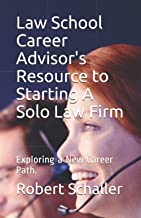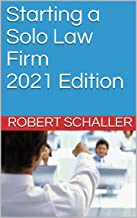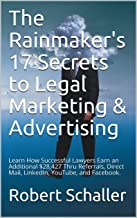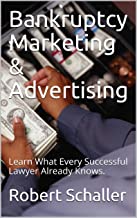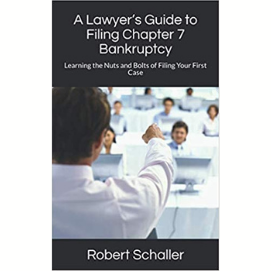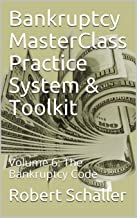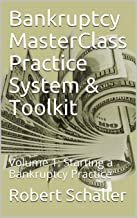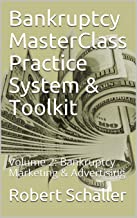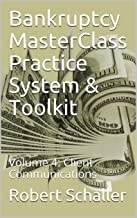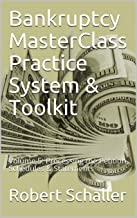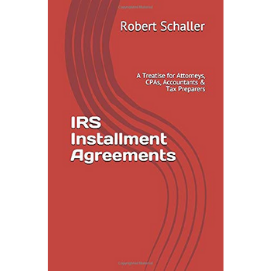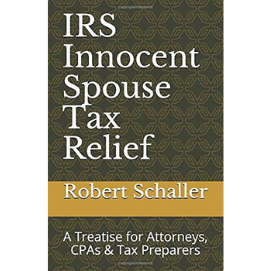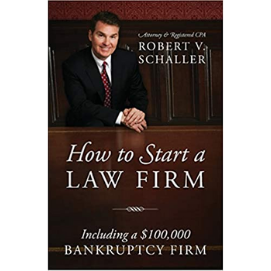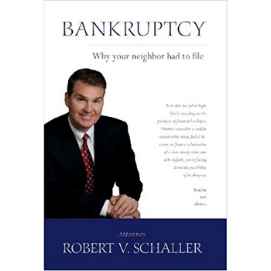Law School Career Advisor’s Resource to Starting a Solo Law Firm: Exploring a New Career Path
$250.00Law school career advisors serve as a vital lynchpin between the college of law and career success. Career advisors are committed to maximizing job placement for 3Ls, and are encouraged to provide a seminar or webinar on starting a solo law firm for third-year law students who have not secured employment.
Alumni should view law school career advisors as their partner in their professional development, especially those alumni exploring a new career path or re-entering the job market. They too should be invited to the seminar.
This book was designed for career advisors who can help guide 3Ls and alumni to a more fulfilling career opportunity. This book was also designed to teach 3Ls and alumni how to start a law firm and to provide substantive skills that can be marketed to needy clients who will pay legal fees. This website shares the author’s 35+ years of legal experience and offers tips on starting a law firm in the current legal environment. The author provides concrete guidance about issues he wished someone had taught him before he started his own law firm.
Starting a Solo Law Firm
$195.00Starting a Solo Law Firm offers young lawyers a must-have desk reference book for building a law firm. Lawyers should invest in their future! Young lawyers worked hard in college and again in law school. Now it is time to reap the rewards of the intensive legal training. Earn the profits deserved. Develop pride and earn respect from your peers. Any lawyer who possesses a heartfelt desire to build a respected legal career, along with the vision and drive to succeed, should read and embrace the steps set forth in this book.
Rainmaker’s 17 Secrets to Legal Marketing & Advertising
$179.00Every lawyer who wants to generate clients, build a book of business, and build a successful legal practice should read this book. Now, at last, the 17 secrets to legal marketing and legal advertising are revealed in one book. Lawyers new to marketing can learn first-hand from a seasoned lawyer how rainmakers earn an additional $28,427 thru referrals, direct mail, LinkedIn, YouTube, and Facebook.
A lawyer who generates clients is called a “rainmaker.” A rainmaker understands this simple truth:
Marketing = Clients = Profits = Success = Freedom
Bankruptcy Marketing and Advertising
$195.00Every lawyer who wants to generate clients, build a book of business, and build a successful bankruptcy practice should read this book. Now, at last, the secrets to legal marketing and legal advertising are revealed in one book. Learn how to generate clients through referrals, direct mail, brochures, content marketing, LinkedIn, YouTube, Facebook.
A rainmaker understands this simple truth: Marketing = Clients = Profits = Success = Freedom
Without clients, a lawyer is relegated to associate status working for a rainmaker. This book teaches an associate to become a rainmaker so he/she can become the boss.
A Lawyer’s Guide to Filing Chapter 7 Bankruptcy: Learning the Nuts and Bolts of Filing Your First Case
$249.00This book offers attorneys a 340-page reference book on filing Chapter 7 bankruptcy cases. Included is a line-by-line analysis of the official bankruptcy forms: petition, Schedules A-J, Statement of Compensation, Statement of Intent, Statement of Financial Affairs, Statement of Your Current Monthly Income, and Statement of Means Test Calculation. This is a must-have resource book for any attorney starting a bankruptcy practice. Citing specific authorities, this book offers a deep dive into the U.S. Bankruptcy Code, Bankruptcy Rules, and case law.
All 6 Volumes of Bankruptcy Masterclass
$499.00Add all six Bankruptcy Masterclass volumes to your bankruptcy library.
A $1,500 value for only $499. A $1,001 savings!
- Volume 1: Starting a Bankruptcy Practice
- Volume 2: Bankruptcy Marketing & Advertising
- Volume 3: Bankruptcy Selling & Closing Clients
- Volume 4: Client Communications
Bankruptcy Masterclass – Volume 1: Starting a Bankruptcy Practice
$250.00Invest in your future! Use this book to start building your own bankruptcy law firm. You worked hard in college and again in law school. Now it is time to reap the rewards of your intensive legal training. Earn the profits you deserve! Develop pride in yourself and earn respect from your peers. If you possess a heartfelt desire to build a respected legal career, along with the vision and drive to succeed, then keep reading and embrace the steps set forth in this book.
Separate chapters discuss capital requirements, banking mandates, office leasing, legal structures, tax implications, technology hardware, software, websites, bar associations, marketing, malpractice, insurance, and social media – Facebook, LinkedIn, YouTube, and Google Ads.
Bankruptcy Masterclass – Volume 2: Bankruptcy Marketing & Advertising
$250.00Every lawyer who wants to generate bankruptcy clients, build a book of business, and build a successful bankruptcy practice should read this book. Now, at last, the secrets to legal marketing and legal advertising are revealed in one book. Learn how to generate clients through referrals, direct mail, brochures, content marketing, LinkedIn, YouTube, Google Ads, and Facebook.
A rainmaker understands this simple truth: Marketing = Clients = Profits = Success = Freedom
Without clients, a lawyer is relegated to associate status working for a rainmaker. This book teaches an associate to become a rainmaker so he/she can become the boss.
Demographics and market research are examined because they play a big role in legal marketing. A clear understanding of the target group is essential to effective marketing and eliminates unproductive marketing efforts and squandering of limited marketing resources.
Bankruptcy Masterclass – Volume 3: Bankruptcy Selling & Closing Clients
$250.00This book discusses the six-step sales process used to close prospective clients so they are delighted to engage the law firm and pay the attorney’s legal fees. First, the rainmaker conducts a Need Analysis during the sales process to determine a prospect’s true need and the real reason the prospect came to meet with the rainmaker. Second, the lawyer asks questions to help the prospect become aware of the prospect’s own true need (i.e., Need Assessment) and not simply the symptom. Third, the attorney offers the Need Solution by connecting the benefits of filing bankruptcy with the prospect’s true need. Fourth, the lawyer identifies all objections and provides additional information to overcome the objections. Fifth, the attorney poses trial close questions when the prospect displays buying signals to gauge the prospect’s level of interest. Sixth, the lawyer offers the Need Satisfaction by asking for the engagement.
In sum, studying this book should help bankruptcy attorneys feel more competent closing deals during the initial consultation phase. Attorneys who embrace this book will be able to engage more clients.
Bankruptcy Masterclass – Volume 4: Client Communications
$250.00Every attorney should read this book cover to cover before seeking his/her first client. Chapter 2 begins with a focus on the ethical requirements surrounding communications with prospective clients. For example, bankruptcy attorneys must be aware of the ethical rules regarding advertising and compensation imposed by their state bar. Plus, attorneys need to comply with the advertising and compensation limitations imposed by the U.S. Bankruptcy Code. These limitations are in addition to, and not an alternative to, the advertising and compensation limitations provided in the state rules of professional conduct. Congress imposed restrictions on any advertisement directed to the general public that indicates that the bankruptcy lawyer provides assistance with respect to credit defaults, mortgage foreclosures, eviction proceedings, excessive debt, debt collection pressure, or inability to pay any consumer debt.
Chapter 3 treats bankruptcy attorneys to a discussion on the importance of client communications to increase profitability and facilitate future client referrals. A bankruptcy attorney has an opportunity to imprint on each client’s psyche the notion that the attorney is a trusted advisor, competent lawyer, caring individual that the client can turn to for advice now and in the future when other legal or financial needs arise. What an opportunity to create a client for life! Chapter 3 presents 15 steps to great client care to enhance profitability through referrals.
Chapter 4 focuses on fact gathering during the initial client consultation. A standardized pre-printed intake form is an essential part of fact gathering. Fact gathering is one of the bankruptcy attorney’s chief goals when meeting with a prospective client for the first time. The intake form allows the attorney to better understand the prospect’s current financial situation and is a starting point for inquiries into the prospective client’s financial problems, goals, and possible solutions. A sample intake form is provided in Chapter 4.
Chapter 5 offers a detailed timeline of a typical Chapter 7 case. Bankruptcy attorneys must be prepared to explain the bankruptcy process to prospective clients. The difference between landing a prospective client and losing a prospective client may be the bankruptcy attorney’s ability to communicate the timeline for Chapter 7 cases. Prospective clients are anxious when they meet a bankruptcy attorney for the first time. The attorney must exude confidence and knowledge. Be ready for the questions about when certain bankruptcy events would occur. A solid familiarity with the bankruptcy timeline is essential. A day-by-day timeline is presented.
Chapter 6 discusses “non-engagement” letter agreements. Not every prospect will engage the law firm. To avoid malpractice claims, bankruptcy attorneys should utilize non-engagement letters that clearly communicate their decision NOT to accept an engagement. Three separate sample non-engagement letters are provided.
Chapter 7 highlights the need to tender bankruptcy disclosures to the prospective client by the bankruptcy attorney prior to a prospective client engaging the attorney. An attorney’s ethical responsibility is to provide a prospective client with sufficient information so that the prospective client can make an informed decision whether to engage the bankruptcy attorney, for what services, and at what cost. Best practices suggest that an attorney document the dissemination of key information. In addition to any ethical requirements, Congress also compelled bankruptcy attorneys to tender these certain disclosures when passing § 342(b) and § 527 of the Bankruptcy Code. Samples of each disclosure is provided.
Chapter 8 addresses written engagement letters, which are a must in every bankruptcy case. A written statement articulating the terms of the engagement reduces the possibility of misunderstanding and offers documentary protection if a disgruntled client claims the lawyer acted unethically. No oral representations. Lawyers are just inviting trouble when the inevitable disgruntled client complains that the scope of the relationship was broader than what the lawyer remembered it to be, or that the disgruntled client complains that the amount of compensation was lower than what the lawyer remembered it to be. Besides, Congress has imposed requirements upon bankruptcy lawyers relating to the engagement letter. First, a bankruptcy lawyer must execute a written contract with the client no “later than 5 business days after the first date on which” the bankruptcy lawyer provides services. A sample Chapter 7 engagement letter is featured.
Chapters 9 and 10 focus on the two-step fact-gathering process necessary to complete the petition, schedules, and statements required to be filed with the Clerk of the U.S. Bankruptcy Court. Fact gathering typically requires multiple communications with the client. As discussed in Chapter 9, each bankruptcy attorney should prepare a checklist of requested documents for clients to produce. The checklist should stress the importance of tendering all the documents on the list that are in the client’s possession and control. The checklist should identify a date by which the documents should be produced to the bankruptcy attorney. Chapter 10 focuses on the client questionnaire, which must be distinguished from the initial intake form completed at the time of the initial consultation. The initial intake form should be considered a brief summary of the prospective client’s financial position. The Chapter 10 client questionnaire is over 50 pages long and provides the details necessary to complete the petition, schedules, and statements. A sample client questionnaire is provided.
Chapters 11, 12, and 13 present sample communication letters relating to the client’s duties and responsibilities AFTER the bankruptcy case was filed. Chapter 11 communications involve tendering the petition, schedules, and statements to the client and urging the client to review the documents for accuracy. Chapter 12 focuses on the § 341 meeting of creditors. Chapter 13 addresses post-petition responsibilities relating to mortgage payments, lease payments, anticipated outcomes, reaffirmation agreements, redemption rights, the automatic stay, adequate assurance deposits to utility companies, and the instructional course concerning personal financial management.
Finally, Chapter 14 offers sample evaluation forms to be sent to each client to help improve the bankruptcy attorney’s practice and increase profitability. Separate evaluation forms relate to the initial consultation, the § 341 meeting of creditors, and the conclusion of the case.
Bankruptcy Masterclass – Volume 5: Processing the Petition, Schedules & Statements
$250.00Every attorney should read this book cover to cover before filing his/her first Chapter 7 bankruptcy case. This book explains the nuts and bolts of filing Chapter 7 – giving attorneys the confidence to provide competent representation to clients by exceeding the minimum competency level of the profession and exercising the skill, knowledge and ordinary care exercised by other attorneys.
This book offers a line-by-line analysis of the official bankruptcy forms prescribed by the Judicial Conference of the United States, including the Petition, Schedules A/B thru J, Statement of Compensation, Statement of Intent, Statement of Financial Affairs, Statement of Current Monthly Income, and Statement of the Means Test Calculation.
In sum, studying this book should make any attorney feel competent to file his/her first Chapter 7 bankruptcy case. Attorneys who embrace this book will be able to better understand the Chapter 7 legal requirements, anticipate bankruptcy issues, and carefully prepare the required petition, schedules, and statements.
Bankruptcy Masterclass – Volume 6: The Bankruptcy Code
$250.00Every attorney should read this book cover to cover before filing his/her first Chapter 7 bankruptcy case. This book explains the nuts and bolts of filing Chapter 7 – giving attorneys the confidence to provide competent representation to clients by exceeding the minimum competency level of the profession and exercising the skill, knowledge and ordinary care exercised by other attorneys.
The goal of this book is to provide attorneys with a structural framework of the bankruptcy process, including a working knowledge of the relevant statutory and judicial authorities. The six types of bankruptcy cases are discussed before examining Chapter 7 eligibility requirements. Next, a day-by-day timeline is presented for a standard Chapter 7 case. Then, the roles of the U.S. trustee and Chapter 7 standing trustee are explored. Plus, the 11 U.S.C. § 341 meeting of creditors is explained followed by a sample Q&A of a typical § 341 examination. Of course, the 11 U.S.C. § 362 automatic stay protections and 11 U.S.C. § 727 bankruptcy discharge are discussed. Typical debtor motions are discussed with text of sample motions provided.
IRS Offer in Compromise, Installment Agreements & Innocent Spouse Relief: A Treatise for Tax Professionals *2021 Edition*
$250.00This treatise offers tax professionals a 664-page scholarly treatise on the IRS programs that relieve taxpayers from crushing IRS back-taxes. This is a must-have resource book for any tax professional offering back-tax relief services. Citing specific authorities, this book offers a deep dive into the U.S. Tax Code, Treasury regulations, court opinions, the Internal Revenue Manual, and IRS Revenue Procedures that comprise the IRS’ back-tax relief programs. The 22-page Table of Contents, 48-page Table of Authorities, and 28-page Index aids tax professionals’ scholarly understanding.
IRS Offer in Compromise: A Treatise for Attorneys, CPAs, Accountants & Tax Preparers *2021 Edition*
$199.00This treatise offers tax professionals a scholarly treatise on the IRS program that relieves taxpayers from crushing IRS back-taxes. This is a must-have resource book for any tax professional offering Offer in Compromise services. Citing specific authorities, this book offers a deep dive into the U.S. Tax Code, Treasury regulations, court opinions, the Internal Revenue Manual, and IRS Revenue Procedures that comprise the IRS’ Offer in Compromise program. The 12-page Table of Contents, 27-page Table of Authorities, and 18-page Index aids a tax professional’s scholarly understanding.
IRS Installment Agreements: A Treatise for Attorneys, CPAs, Accountants & Tax Preparers *2021 Edition*
$189.00Installment agreements are offered to taxpayers who want to avoid IRS collections and repay back-taxes over time. This book offers a deep dive into the U.S. Tax Code, Treasury regulations, court opinions, the Internal Revenue Manual, and IRS Revenue Procedures that comprise the IRS’ Installment Agreement program. This is a resource book for tax professionals. Congress authorized relief from the IRS collections apparatus, including protection from bank levies, wage garnishments, lawsuits, and federal tax liens. “Routine” installment agreements are explored first, followed by the following: “Guaranteed” installment agreements; “Streamlined” installment agreements; “In-Business” installment agreements; and “Partial Payment” installment agreements. These five types of installment agreements are analyzed with relevant citations to the U.S. Tax Code, Treasury regulations, court opinions, the Internal Revenue Manual, and IRS Revenue Procedures. A separate discussion is presented for requesting an agreement, including a line-by-line analysis of IRS Form 9465, Installment Agreement Request. A 7-page Table of Contents, a 15-page Table of Authorities, and an 8-page Index aids a tax professional’s scholarly understanding.
IRS Innocent Spouse Tax Relief: A Treatise for Attorneys, CPAs & Tax Preparers *2021 Edition*
$189.00This book offers tax professionals a scholarly treatise on the IRS program that relieves a requesting spouse (or former spouse) from joint and several tax liability. Innocent spouse relief is offered on equitable grounds or when the tax is attributable to a non-requesting spouse’s bad behavior – including fraud, income concealment, income misstatement, and unwarranted expense deductions or tax credits. This book offers a deep dive into the U.S. Tax Code, Treasury regulations, court opinions, the Internal Revenue Manual, and IRS Revenue Procedures that comprise the IRS’ Innocent Spouse Tax Relief program. This is a resource book for tax professionals.Congress authorized relief to the “innocent” spouse who would otherwise be inequitably harmed by the non-requesting spouse. The three types of relief from joint and several tax liability are analyzed with relevant citations to the U.S. Tax Code, Treasury regulations, court opinions, the Internal Revenue Manual, and IRS Revenue Procedures. A separate discussion is presented for Innocent Spouse Relief, Separation of Liability Relief, and Equitable Relief, including a line-by-line analysis of IRS Form 8857, Request for Innocent Spouse Relief. The book also explores premature and untimely relief claims, appellate review of rejected claims, and refund claims after relief is granted. IRS Innocent Spouse Tax Relief: A Treatise for Attorneys, CPAs & Tax Preparers also explores the IRS collection process with a discussion of IRS levies, tax liens, installment agreements, the offer in compromise program, and currently not collectible status. Finally, powers of attorney and third-party authorizations are examined, including a line-by-line analysis of IRS Form 2848, Power of Attorney and IRS Form 8821, Tax Information Authorization. An 8-page Table of Contents, a 19-page Table of Authorities, and a 9-page Index aids a tax professional’s scholarly understanding.
DIY Guide to IRS Offer in Compromise & The Fresh Start Initiative *2021 Edition*
$96.00This book offers taxpayers an all-encompassing presentation of the IRS program that relieves taxpayers from crushing IRS back-taxes. This is a must-have book for any taxpayer challenging the IRS without the help of a tax lawyer. Written by a tax attorney, this book makes the process as easy as possible, including a line-by-line analysis of IRS Form 656, Offer in Compromise and Form 433-A (OIC), Collection Information Statement for Wage Earners and Self-Employed Individuals. For a fuller understanding, this book also offers a deep dive into the U.S. Tax Code, Treasury regulations, court opinions, the Internal Revenue Manual, and IRS Revenue Procedures that comprise the IRS’ Offer in Compromise program, which is also known as The Fresh Start Initiative.
How to Start a Law Firm: Including a $100,000 Bankruptcy Firm
$40.00Invest in your future! Use this book to start building your own law firm to generate $100,000 per year in legal fees. You worked hard in college and again in law school. Now it is time to reap the rewards of your intensive legal training. Earn the profits you deserve! Develop pride in yourself and earn respect from your peers. If you possess a heartfelt desire to build a respected legal career, along with the vision and drive to succeed, then embrace the steps set forth in this book. Some lawyers have the courage to open a solo-practice law firm. Other lawyers start a law firm with one or two other lawyers they know and trust. There is strength in numbers. It is appealing to young lawyers in particular to have a law school classmate or fellow associate nearby for support. Sometimes a lawyer needs another lawyer to brainstorm and bounce ideas around. Either way, a lawyer who starts a law firm must wear two hats: a lawyer hat, and a business hat. Learn the secrets…
Bankruptcy: Why Your Neighbor Had to File
$18.95Your debt has piled high. You’re standing on the precipice of financial collapse. Whether caused by a sudden catastrophic event, failed decision, or from a culmination of a slow, steady slide into debt default, you’re facing down the possibility of bankruptcy. You’re not alone. Eight to ten million Americans are expected to file bankruptcy during the next five years. Most are unaware that the seeds of their financial destruction have already been sown. It’s only a matter of time before their massive debt loads become unmanageable and an unexpected shock thrusts them over the edge. Learn the Top 10 reasons people file for bankruptcy and protect yourself from the impending fall.

